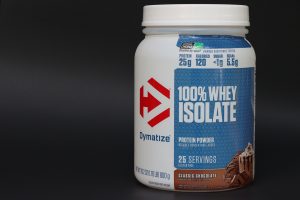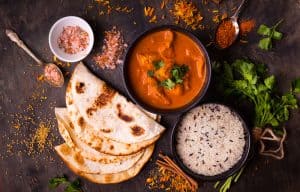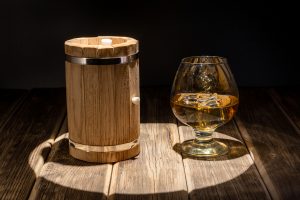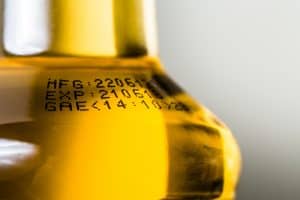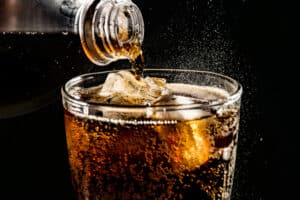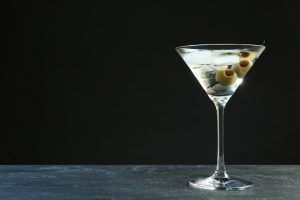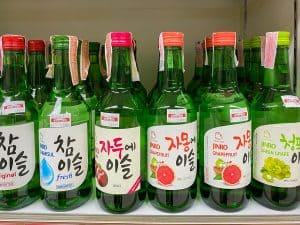
China offers travelers and locals a vast array of drink options. With a population of nearly 1.4 billion people, you’re sure to have diverse drink options.
While the nation is known for its world-class variety of teas, many other options are available in the non-alcoholic and grown-up-juices departments.
China is known for its rich tea culture and diverse drink options. Along with an array of local soft drinks and bottled water, milk, soy, and coconut milk are other popular drinks. Alcoholic beverages like beer, wine, Chivas, tea, and baijiu are also available, and kvass was introduced by Russians.
The most popular drinks in China can be divided into non-alcoholic and alcoholic options. Tea is one of the most popular drinks in China and can be regarded as the national drink of China. But let’s dive in to see what other drink options are popular.
Non-Alcoholic Options
You’re spoiled for non-alcoholic choices in China—a myriad of teas, soda drinks, and even exciting coffee options abound. So, let’s see what’s available when you visit China to drink like a local.
But first, let’s go on a virtual drinks tour of China’s most popular non-alcoholic drinks.
1. Tea
You might say that tea is China’s national beverage, and you wouldn’t be wrong. The Chinese absolutely love tea! There are so many options, but we’ll focus on a few of the exciting choices available.
Black Tea

Black tea is made from the leaves of the Camellia sinensis plant, allowing it to become heavily oxidated. When you brew a cup of black tea, you end up with an amber or brownish hue, and you can expect a wide variety of tastes and aromas.
The taste can range from sweet to savory, and the most common is fruity, malty, nutty, and earthy nuances. Because there are so many variations on the theme, the final taste profile varies widely.
If you’d like to learn more about black tea and your interest is piqued, look at these options to find the best black tea.
Hong Kong Milk Tea
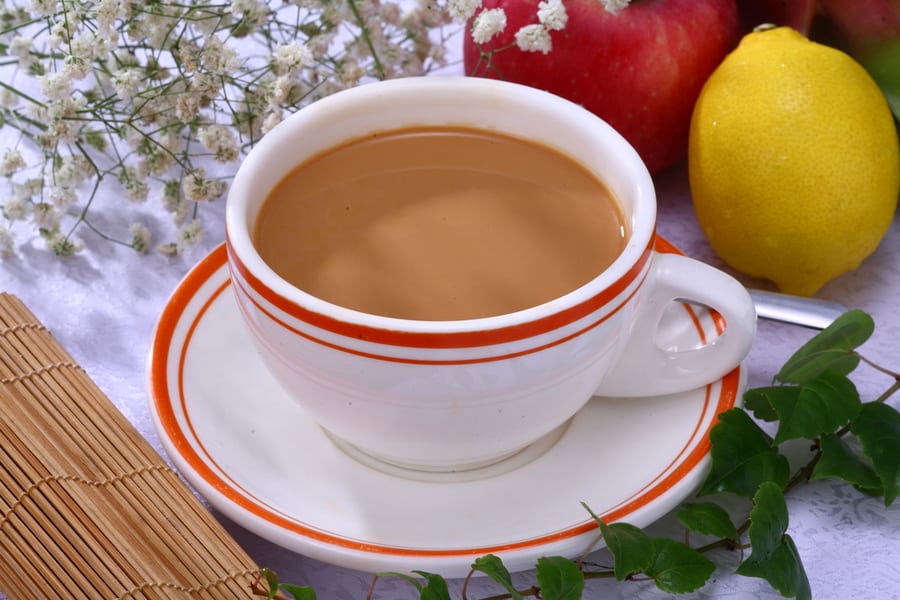
Hong Kong Milk Tea is a personal favorite of mine because of its silky smoothness combined with creaminess. It is made from hot water, black tea leaves, and either evaporated milk and sugar or sweetened condensed milk.
This is my favorite recipe; you’re guaranteed an excellent brew each time.
Sometimes people will also refer to it as pantyhose tea or silk-stocking tea because it is usually prepared in a tea sock resembling pantyhose.
The British brought their love of milk and sugar in their tea to Hong Kong during their colonial rule over the region and their tradition of afternoon tea.
Pu-erh Tea
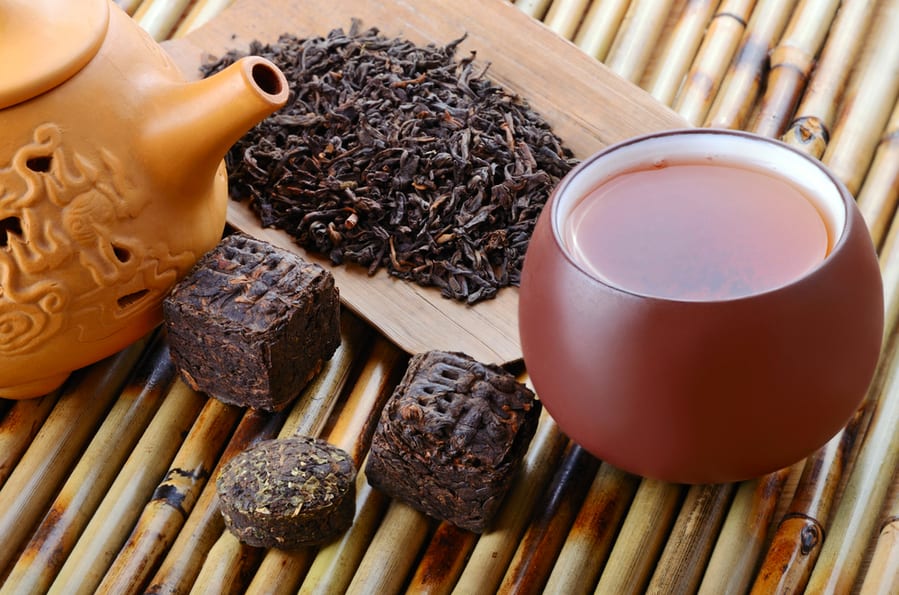
If you’re into exclusive and semi-rare teas, this is the one for you! Pu-erh tea is made exclusively in Yunnan, China. Two varieties are commonly available: the raw, non-fermented variety, pu erh sheng, and the ripe, fermented version, pu erh shu.
The unfermented variety has hints of bitterness, a sweet aftertaste, and a fresh vegetal taste. The ripe, or fermented, type has a milder yet earthy flavor which some drinkers compare to mushrooms.
Consumers can store the tea for a long time, and as time progresses, the scent and tastes change, and the tea becomes milder and smoother.
It is also hailed in the West for its health benefits. This video is a beautiful introduction to pu-erh tea; you can learn more about this unique tea here.
Bubble Tea

Maybe we should have filed this under soft drinks, but bubble tea or boba tea is one of the most popular and trendiest drinks in China—especially among the younger population.
Essentially it is sweet milk tea with tapioca pearls or ‘boba’ as they are known in China. While tea in itself is healthy, there are concerns that the drink’s high sugar content negates all the health benefits.
Genuine pearls are seen as a sign of affluence, so maybe the ‘pearls’ in the drink make them feel a bit richer than they are. Nothing wrong with a bit of imagination, but rather enjoy this sugar-spiked drink in moderation.
Tieguanyin – Iron Goddess of Mercy

Tieguanyin is a unique tea primarily associated with Anxi in the Fujian province. However, don’t let the association with the Iron Goddess of Mercy frighten you. This is the perfect tea to consume throughout the day. The taste falls between black and green tea, yet it is yellowish.
Tieguanyin is an oolong tea that smells fresh and floral, and the taste offers hints of fruit and berries. The aftertaste reminds one of sweet honey after each sip—not so intimidating after all.
There are so many more types of tea you can discover here.
2. Milk
It might seem odd to have a heading for milk, but you’ll soon discover that milk can be converted into several popular, interesting, and delicious drinks in China.
Soybean Milk
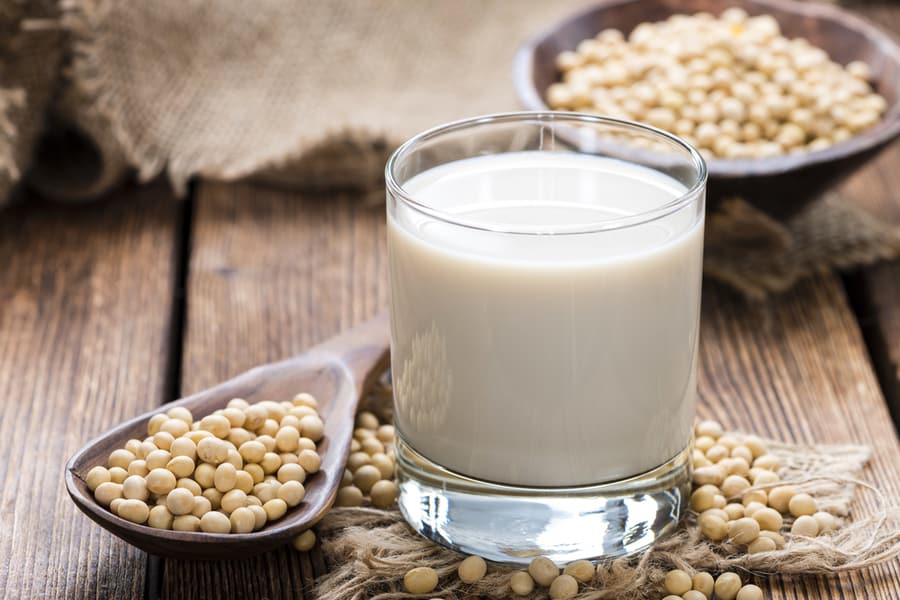
In the West, we are used to soy milk as an alternative to dairy and touted by health freaks and vegans as the ultimate. However, in China, it isn’t a replacement for anything—it is part of the daily diet, and people enjoy it daily.
Soybean milk, or soy milk, has been part of the Chinese diet and culture for thousands of years. What started out as a healthy, cheap, and nutritious food kept evolving, and tofu is a prime example of soy milk’s most famous byproducts.
You can make your soybean milk at home by following this recipe.
Coconut Milk
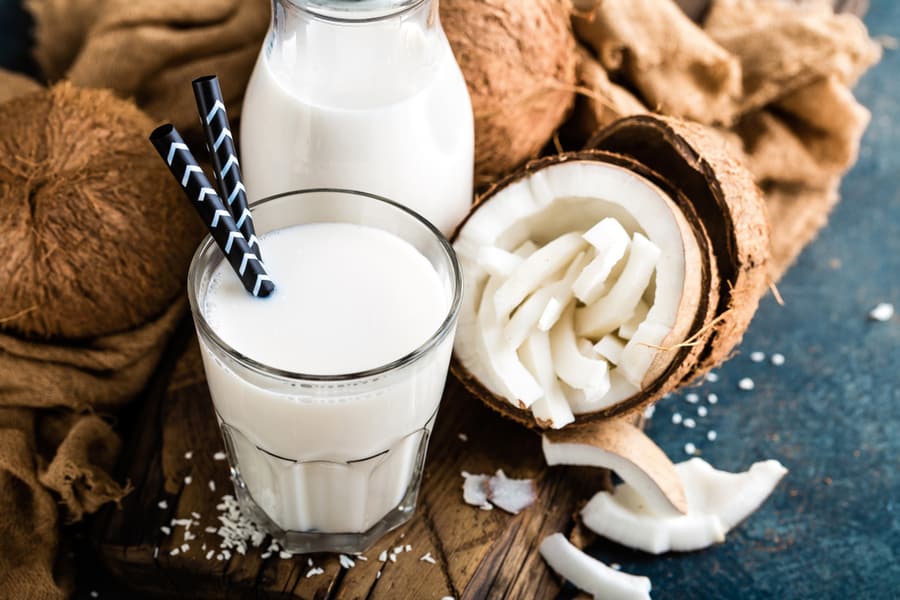
In China, coconut milk is made from the meat of coconut fruits. Milk, water, and sugar are added to make a thicker consistency when compared to regular coconut water. This drink is popular in the southern parts of the country.
Be warned; it is an incredibly sweet drink! The thicker varieties are loaded with sugar and fats and can easily lead to weight gain. However, the skim versions don’t contain fat at all.
Thin coconut milk is the middle ground between the thick and skim versions offering the best of both versions.
‘Cheese Creamsicle’ – Chocolate Rock Salt Cheese
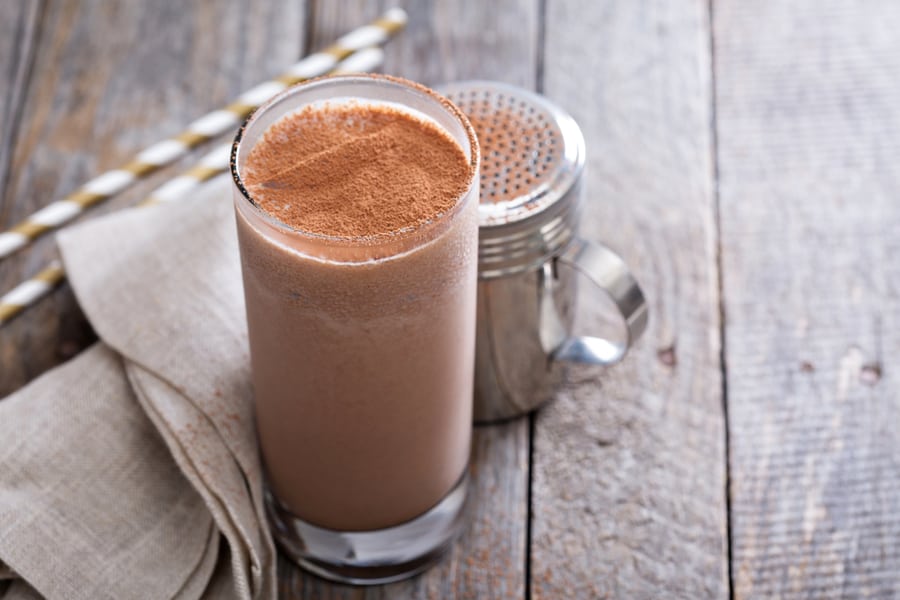
Combining cocoa, rock salt, and cheese may sound odd initially, but it is a true testament to Chinese creativity. This is China’s answer and version of the American chocolate milk with foam.
The three ingredients are blended in a cup of milk. If you’d like to try this fusion of tea with added creamy saltiness, this recipe comes highly recommended.
Happy Lemon, originally from China, has locations across the USA and offers the chocolate version.
3. Bottled or Canned Drinks
Almost every nation and country has its version of bottled and canned drinks, and China is no exception. So let’s see the most popular drinks among the locals.
Wahaha Nutri-Express
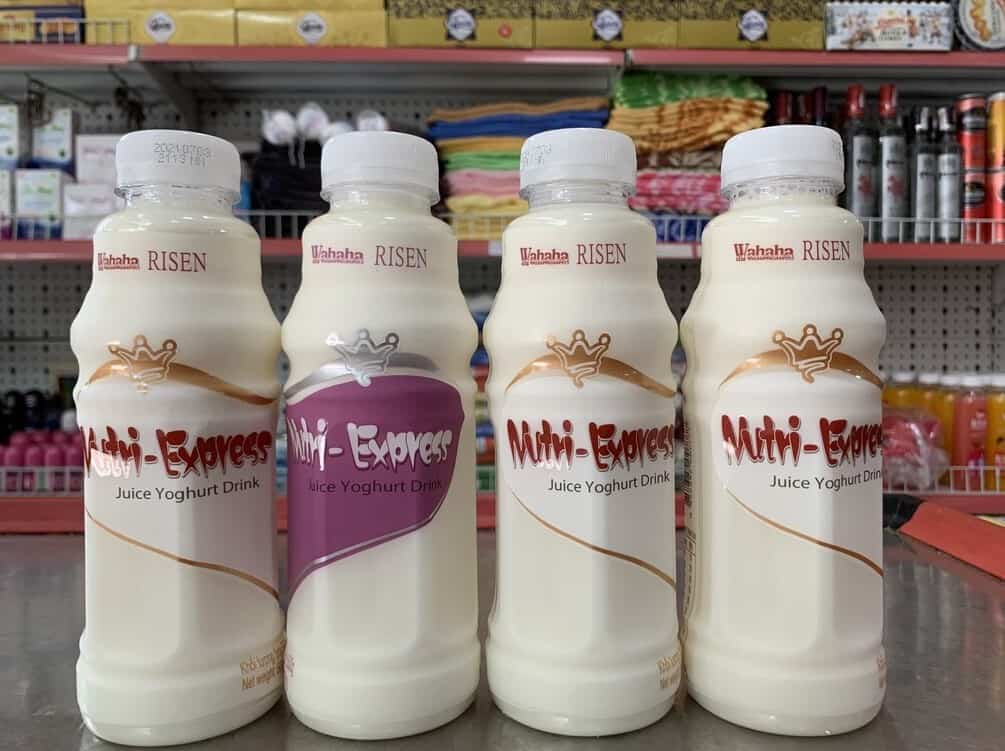
This bottled drink is maybe the closest thing we’ll ever get to what liquid Skittles would taste like. The only difference is there are no Skittles inside!
Instead, Wahaha Nutri-Express is a mixture of fruit juice and milk—the consistency is thinner than drinking yogurt and reminds one of skim milk.
So it is easy to see why it is one of China’s top-selling bottled drinks—it provides nutrition from the milk and five essential nutrients required by the body.
Salt Soda Water

Before Coca-Cola knocked on the door in China, salt soda water was the fizzy refreshment for Chinese consumers. Shanghai’s residents especially enjoyed the drink.
You can still find it in convenience stores. Hints of mint and lemon keep the sugary carbonated water in check and provide a balanced drink.
Suanmeitang – Sour Plum Drink
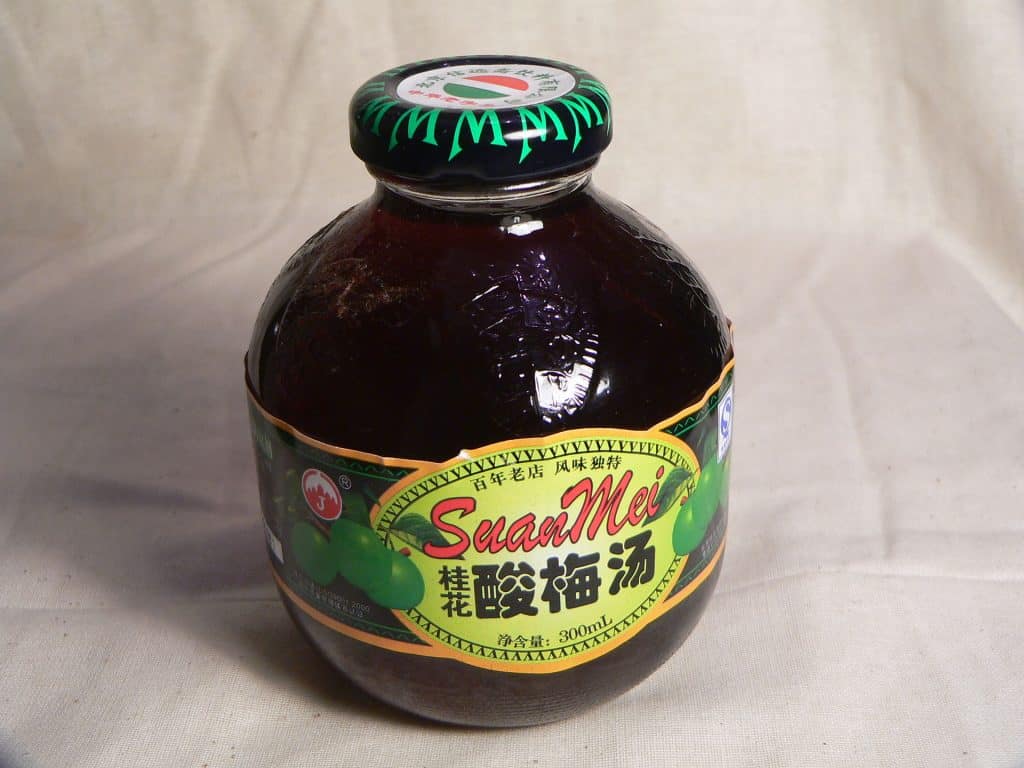
This is a bitter-sweet drink that pairs excellently with spicy Chinese dishes. It is also a soothing and refreshing drink on a hot summer’s day.
This popular and traditional drink is brewed from smoked plums, rock sugar, and aromatic ingredients like licorice root, sweet osmanthus, and hawthorn.
Serve your Suanmeitang with ice and enjoy the unique blend of fruity sweetness with a tinge of sourness and a light salty undertone. This drink also aids digestion, or you can drink it as an appetizer.
C100 Bottled Water
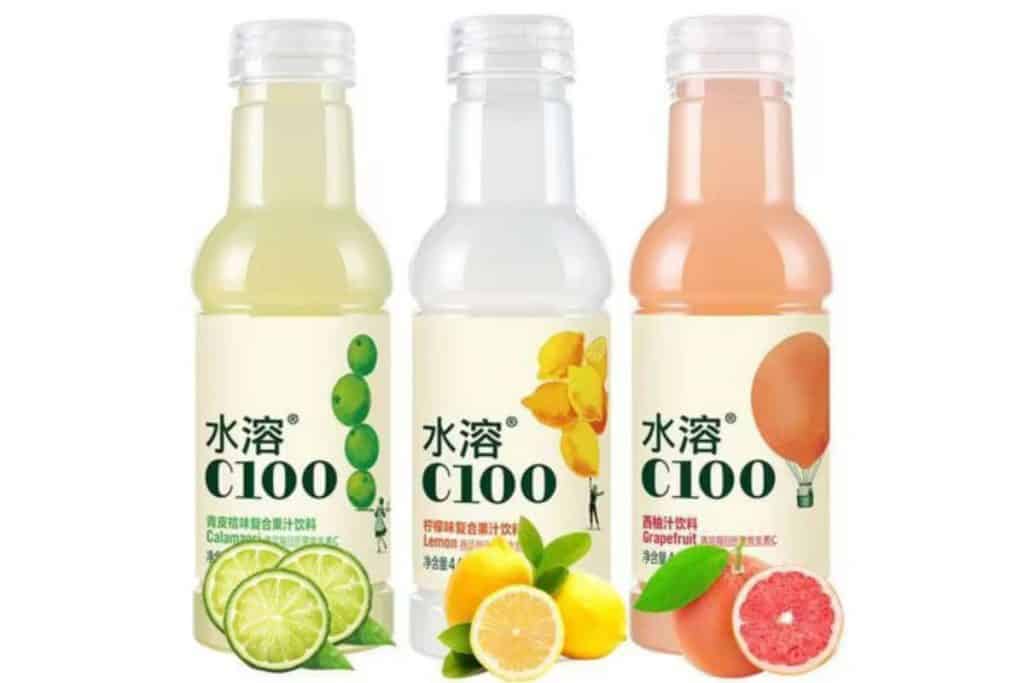
C100 is China’s answer to electrolyte water—much like Gatorade you’d find in the USA. It is a hugely popular beverage available in a wide variety of flavors.
The infusion of minerals and vitamins also aids in overall well-being. The taste is sweet yet tangy with a bit of sharpness.
Alcoholic Options
Just before you thought the Chinese were a nation of teetotalers, they’re not. Instead, China has some unique alcoholic beverages, with beer and rice wine being the top choices, but there’s more to discover!
1. Beers
Almost every culture on earth has a form of beer—the base ingredients may differ slightly. China is no exception.
Tsingtao Beer
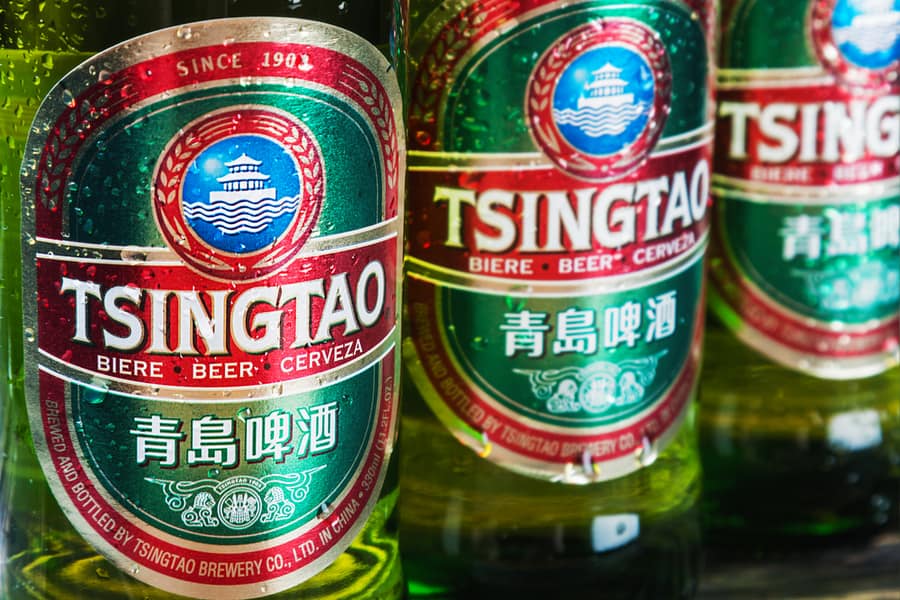
Tsigntao beer is massively popular across the whole country and can also be found across the globe far beyond China’s borders. This is also the most recognized Chinese beer in the world and is sold in 62 countries.
German settlers who settled in Qingdao in the Shandong Province founded a brewery there in 1903 and introduced their methods to the area.
Perhaps the high malt flavor combined with a hint of hops and no bitter aftertaste makes this beer so popular. Or maybe the pure spring water from Laoshan in Shandong Province aids in making such a good-tasting beer.
The company imports barley, hops, and yeast from Canada and Australia.
Xinjiang or Sinkiang Black Beer
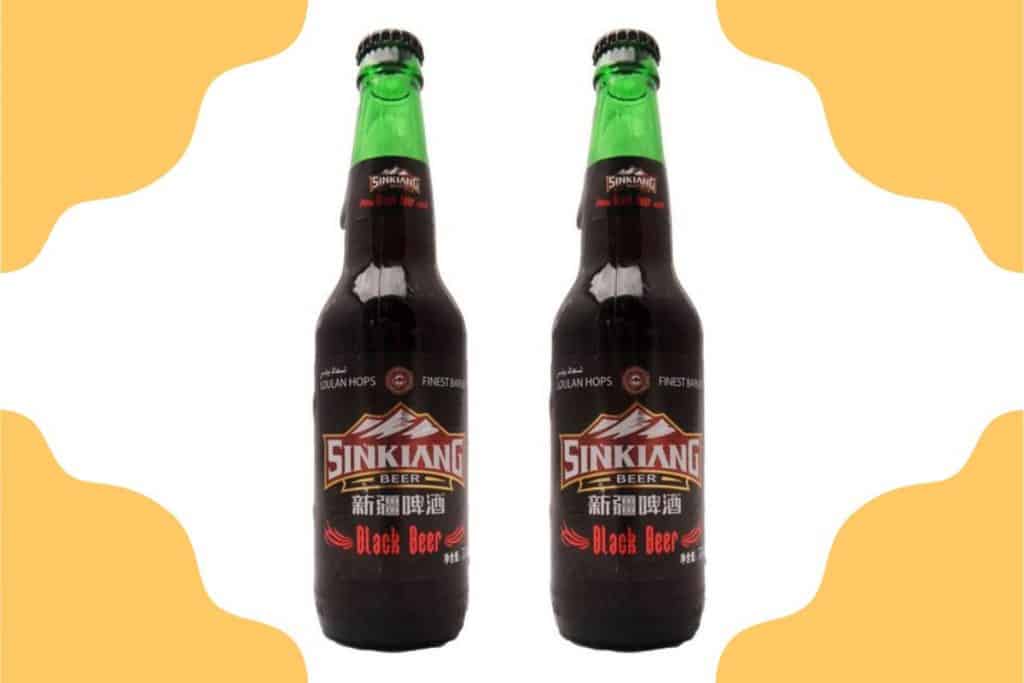
The local ethnic population in the northwest of China in Xinjiang created this famous beer to accompany their spice-laden cuisine. Pretty nifty, hey?
The breathtaking region’s climate influences the locally grown and sourced hops’ flavor resulting in a unique taste.
You can compare it to a Western dark lager, but the nutty aroma and deep sweetness make it a trendy and drinkable beer.
2. Wines
The Merriam-Webster dictionary defines wine as “the alcoholic usually fermented juice of a plant product (such as a fruit) used as a beverage.”
That’s a good working definition, but they do things differently in China, as we’ll see below.
Mijiu
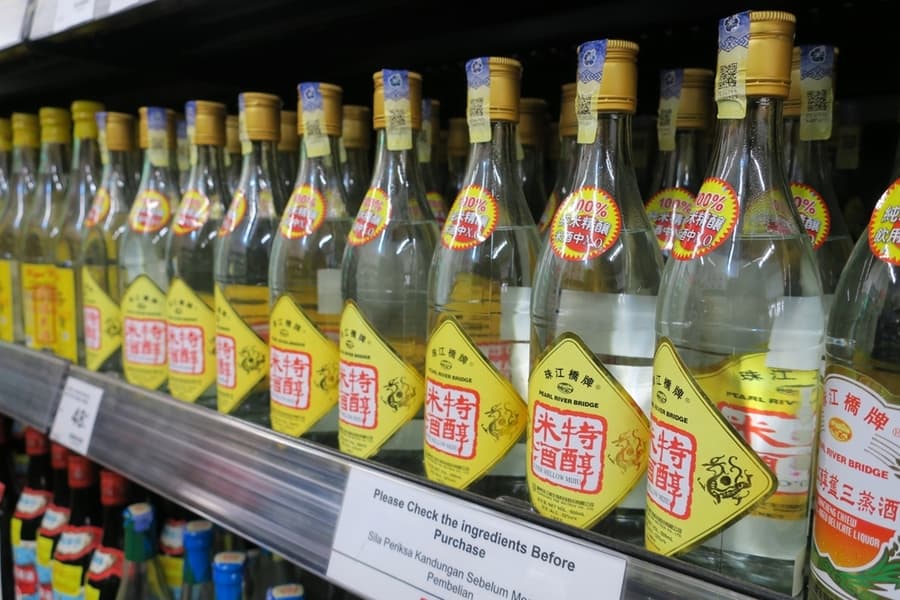
This is the best place for a novice to start with Chinese alcoholic beverages. Mijiu is a catch-all term that includes a variety of rice-derived wines. It is as vital to Chinese cooking as cheongju is to Korean cuisine or sake to Japanese cuisine.
A common trait that underlies the wide variety of Mijius is the mild bitterness combined with an intense sweetness, and the alcohol content ranges between 15% and 20% ABV. Unlike Western wines, which are served chilled, Mijiu is served warm.
Jiuniang
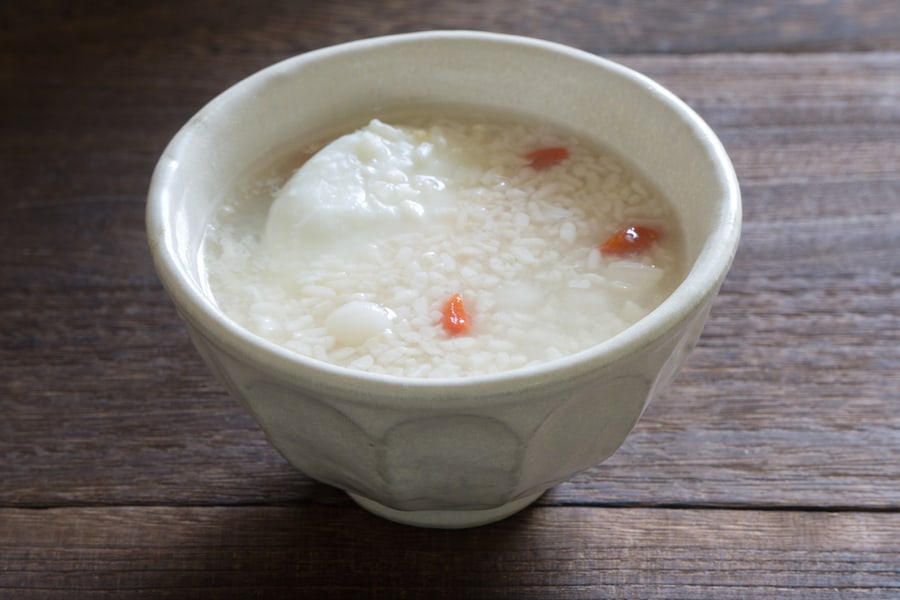
You aren’t far off if you thought it looked like rice soup. It is an unfiltered rice wine with a very low alcohol content (around 2% ABV).
The pudding-like texture of soft rice grains and aromatic liquid is the starting point for creating rice wine or vinegar, but the fermentation process is prematurely cut short.
Jiuniang is associated with the winter solstice festival and is widely available at stalls lining the streets during the festival. The cold winter temperatures also make it easier to control the fermentation process.
3. Other Alcoholic Drinks
Apart from beer and wine being popular in China, other options are popular nationwide.
Baijiu

Westerners tend to call baijiu rice wine, but this is a gross over-simplification and misleading. In Mandarin, baijiu means ‘white alcohol,’ commonly distilled from sorghum.
Other grains like rice, corn, millet, and wheat can also be used to distill this drink. While the drink might be an acquired taste, it is so popular that the Chinese government standardized the recipes and styles.
Still, each region has its version of the drink, and the recipe can vary from one town to town and province to province. You can learn more about baijiu here.
Baijiu is a popular choice during and after business meetings. However, if you’re doing business in China and you’re offered a drink of baijiu, you mustn’t decline the drink because it is considered rude and could tank your dealings.
Chivas and Green Tea

If you want to join the Chinese night owls on a night about town, you’ll probably see Scotch whisky and green tea on their drink list.
This cross-cultural fusion delivers a smooth, honeyed taste with a kick, so be careful not to over-indulge.
Kvass
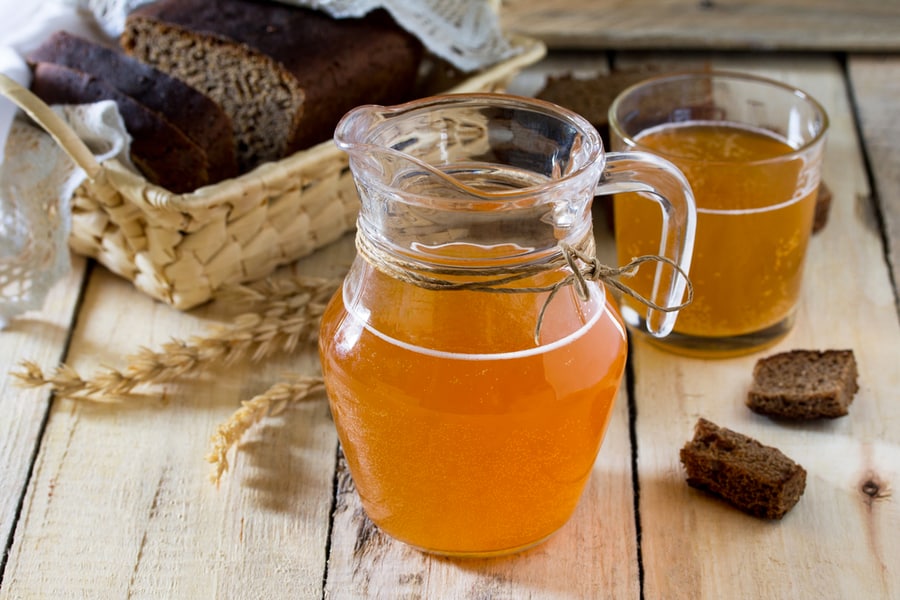
The Russians introduced kvass to northern China during the nineteenth century, and the iconic drink remains ever popular, especially in Xinjiang and Harbin. Kvass is a popular homemade brew flavored with strawberries, raisins, herbs, and mint and made from black bread or rye.
It tastes like a shandy, but the ABV is around one percent, and the texture is thicker when compared to a regular shandy.
Conclusion
As you can see from the options we’ve discussed, many popular drink options exist. China caters to everybody’s taste with its non-alcoholic and alcoholic options. We’ve divided non-alcoholic options into tea, milk, bottled drinks, and water.
In contrast, the popular alcoholic options include beers, wines, and numerous other options such as baijiu, Chivas and tea, and kvass.

